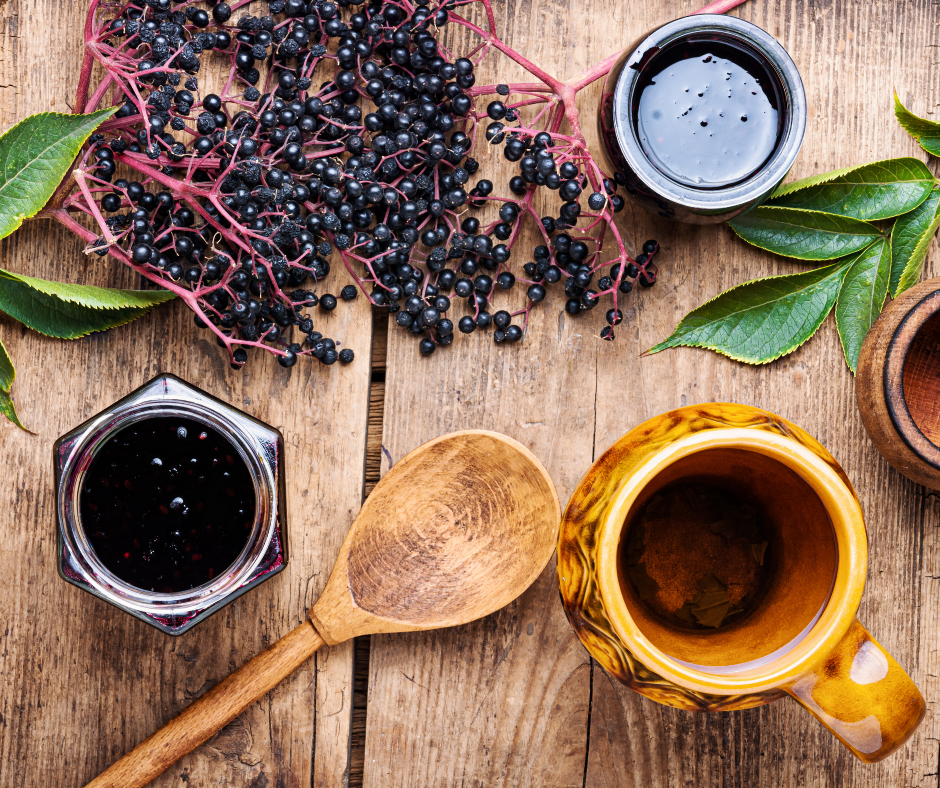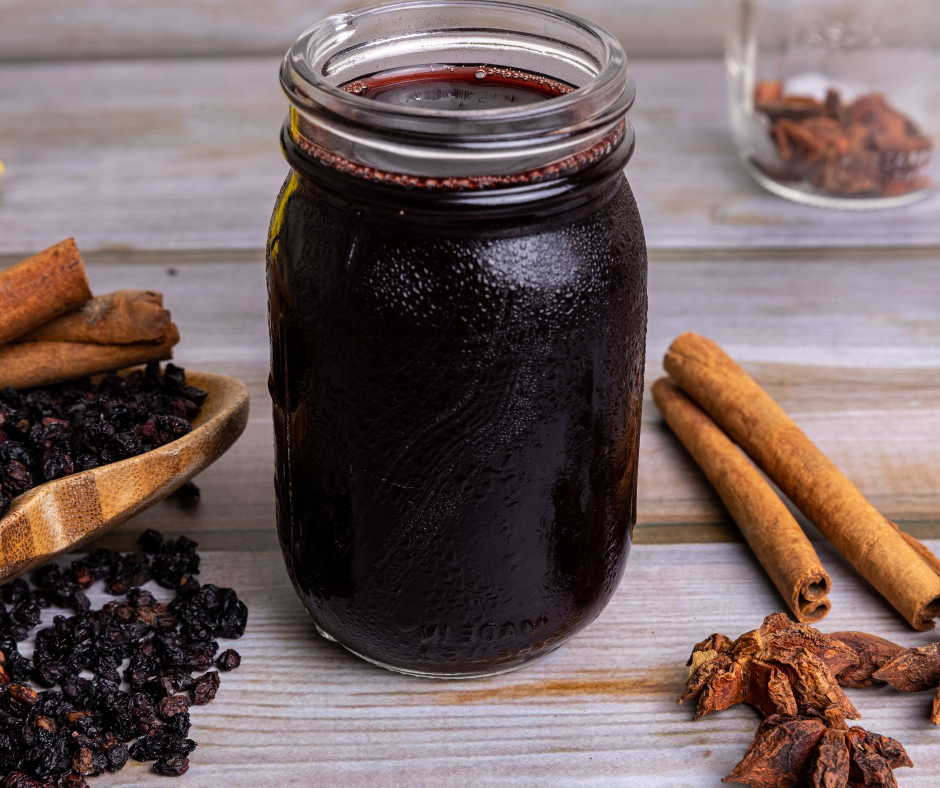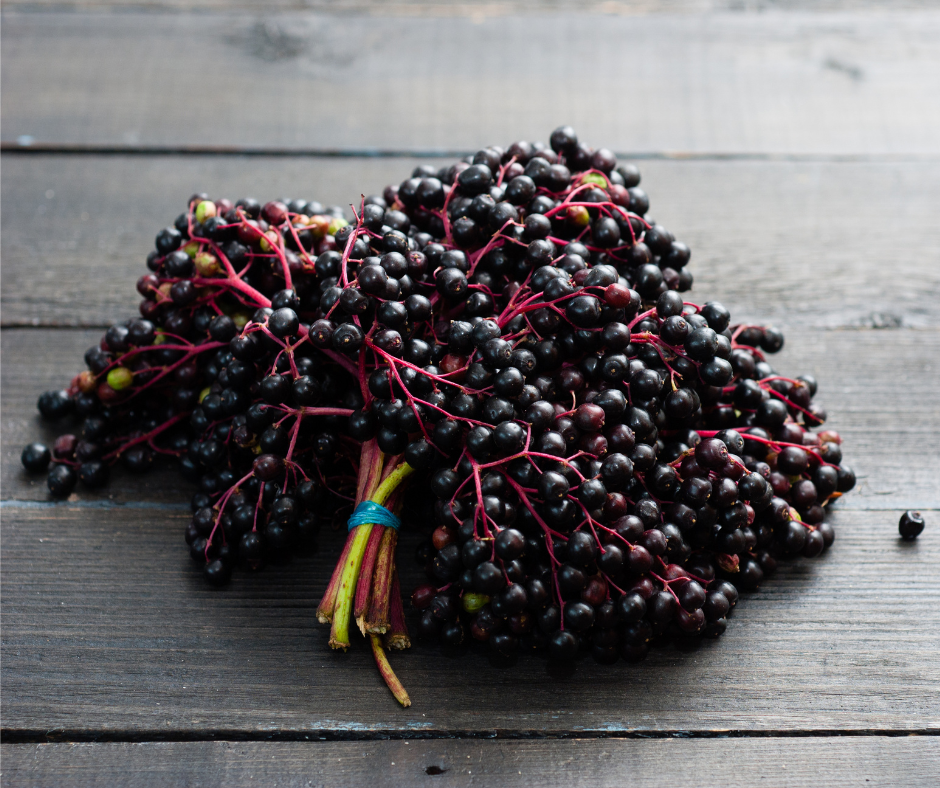Introduction
Elderberries have been used for centuries as a remedy for various health issues such as colds and flu. Recently, they have gained popularity as a superfood due to their high vitamin and antioxidant content. Along with its health benefits, elderberries are also known for their distinct flavor profile that is difficult to describe. So, What Does Elderberry Taste Like? In this article, we will explore the taste of elderberries and why it is important to understand its unique flavor.
An Overview Of Elderberry And Its Popularity
Elderberries are the fruit of the Sambucus tree and are native to Europe, Africa, and Asia. They are small, dark purple berries that grow in clusters and taste tart. Elderberry extract and syrup have gained popularity recently due to their potential health benefits, particularly in improving immunity.
The Importance Of Tasting And Understanding The Unique Flavor Profile Of Elderberries
Understanding the flavor profile of elderberries is important as it can help enhance the taste of dishes and beverages that use elderberries as an ingredient. Elderberries have a sweet-tart flavor profile similar to that of blackberries or blueberries. The sweetness can be enhanced by cooking or adding sugar. The tartness contrasts pleasantly with the sweetness, giving elderberries a balanced flavor.
In addition, elderberries also have earthy undertones that add depth to the flavor profile. Elderberry can be used in various dishes such as jams, pies, and cocktails. Balancing its flavor with other ingredients is important in creating a well-balanced dish or drink.
In conclusion, tasting and understanding the unique flavor profile of elderberries can greatly enhance its use in culinary applications. Its sweet-tart flavor and earthy undertones make it a versatile ingredient that can elevate any dish or drink.
What Does Elderberry Taste Like?
A Description Of The Flavor Profile Of Elderberries
Elderberries, known for their deep purple hue and small size, have a unique flavor profile that is difficult to describe. At first bite, they may seem tart, somewhat similar to blackberries, but with a character all their own. The flavor is earthy and robust, with a slightly sweet undertone that becomes more pronounced when they are ripe. If you are trying raw elderberries, do not be surprised by a bit of bitterness – it is part of their charm.
Elderberry’s Taste And Aroma Notes
Elderberries have a deep, rich flavor that is sweet and tart, similar to blackberries or a mix of cranberries and raspberries. The taste of elderberries can vary depending on the ripeness of the fruit, with riper berries being sweeter and less tart. Elderberries also have earthy undertones that add depth to their flavor profile. This unique combination of sweetness, tartness, and earthy undertones makes elderberries a versatile ingredient in various dishes and drinks.
Understanding the flavor profile of elderberries is essential in enhancing the taste of dishes and beverages that use elderberries as an ingredient. Elderberries can be used in various dishes, from sweet jams and pies to cocktails. To achieve a well-balanced dish or drink when using elderberries, it is crucial to know how to balance their flavor with other ingredients.
In conclusion, to answer ‘What Does Elderberry Taste Like?’, the taste of elderberries can be best described as a harmonious combination of sweetness, tartness, and earthy undertones. Its unique flavor profile makes it a versatile ingredient used in various culinary applications. Understanding the taste and aroma notes of elderberries is crucial in creating well-balanced dishes and drinks that will enhance the palate.
The Nutritional Value Of Elderberry
Health Benefits Of Elderberries
Elderberries are widely known for their numerous health benefits. The berries are packed with antioxidants and anti-inflammatory properties that provide many advantages, such as reducing the risk of cardiovascular disease and promoting healthy skin. Elderberries also have immune-boosting effects that help ward off colds and flu, making them an excellent natural remedy for preventing and treating respiratory infections.
Nutritional Content And Value Of Elderberry
Elderberries are a powerhouse of nutrients, vitamins, and minerals. They contain vitamin C, which helps boost the immune system, and vitamin A, essential for good vision and skin health. Elderberries also offer potassium, iron, calcium, and phosphorus. Additionally, elderberries are a good source of fiber, which is vital for digestive health.
Moreover, elderberries are rich in flavonoids, plant compounds known for their antioxidant effects that can help prevent cell damage caused by free radicals. These flavonoids can help reduce inflammation, promote cardiovascular health, and protect against chronic diseases like cancer.
In summary, elderberries are a nutrient-rich fruit known for their unique flavor and numerous health benefits. Incorporating elderberries into your diet can provide a range of benefits for overall health and wellness.
Cultivation Of Elderberries
Growing And Harvesting Elderberries
Elderberry plants are relatively easy to grow and can be cultivated in many regions. They prefer moist, well-drained soil and can tolerate a range of temperatures. Elderberry plants require an ample amount of sunlight to thrive, and they are usually planted in early spring.
Elderberries generally ripen in mid-August to early September, depending on the location and weather. The berries should be harvested when fully ripe, plump, and slightly firm to the touch. One can determine the ripeness by tasting the fruit. The ideal time to harvest is early in the morning when the berries are at their juiciest.
General Cultivation And Farming Practices
Elderberry plants can grow up to 12 feet tall and produce fruit for up to 30 years. Therefore, proper pruning is essential to ensure the longevity and health of the plant. Elderberry plants must be pruned regularly during the first year of growth to encourage strong root development. After the first year, pruning should be done annually to remove weak or damaged wood and promote new growth.
In terms of pests and diseases, elderberry plants are relatively resistant. However, they are susceptible to common fungal diseases like powdery mildew and verticillium wilt. Proper sanitation practices, such as removing and destroying infected leaves and stems, can help prevent the spread of these diseases.
In summary, elderberry plants are relatively easy to grow and offer numerous health benefits. With proper cultivation practices, one can enjoy a continual harvest of these flavorful and nutritious fruits.
Common Uses Of Elderberry
Culinary Uses Of Elderberries
Elderberries are well known for their medicinal properties but are also used extensively in cooking. They have a unique flavor profile that combines tones of tart, sweet, and earthy bitterness, making them a versatile ingredient in numerous recipes. Elderberries are used to make sauces, jams, jellies, syrups, and pies, and they are often paired with other tart or sweet fruits like raspberries or apples. The flowers of the elderberry plant are also used in cooking and can be used to make cakes, tea, and cordials.
Historical And Traditional Use Of Elderberries
Elderberries have a long history of use in traditional and folk medicine. The Native Americans used elderberries to treat infections, while the ancient Egyptians used the flowers of the elderberry plant to clear up skin blemishes. In Europe, elderberry syrup was traditionally used to treat colds and flu, and it was believed to have strong immune-boosting properties. Today, elderberry is still used in modern medicine as a natural remedy for various ailments such as respiratory infections and fever.
In conclusion, elderberries are a versatile fruit with many culinary uses. They are also rich in antioxidants and other health-boosting compounds, making them a beneficial addition to any diet. Whether enjoyed in a tasty recipe or used for medicinal purposes, elderberries are a valuable part of traditional and modern herbal medicine.
The Various Forms Of Elderberry
Elderberry In Different Forms, Such As Juice, Syrup, And Tea
Elderberry can be consumed in various forms, such as juice, syrup, and tea. Elderberry juice is made by crushing the berries and straining out the juice. It can be consumed as a refreshing beverage or mixed with other juices to create a delicious and nutritious drink. Elderberry syrup, on the other hand, is made by boiling the fruit with water and sugar until it reduces to a thick, sweet liquid. It can be added to drinks, desserts or topping for pancakes and waffles.
Elderflower tea is made from the flowers of the elderberry plant and has a delicate floral flavor. It is often consumed for its medicinal properties, such as its ability to reduce inflammation, boost the immune system, and help with respiratory illnesses.
Methods Of Preparation And Consumption
Elderberries can be consumed in various ways, depending on personal preference and the recipe used. When consuming raw elderberries, it is important to remove the stems and leaves, as they contain cyanide-inducing glycosides that can cause nausea and vomiting if ingested in large amounts.
Cooking elderberries can help to balance their tartness and bring out their sweetness. Elderberries are often used in pies, tarts, jams, and jellies. They can also be added to smoothies, oatmeal, and yogurt for a nutritious and tasty breakfast.
In conclusion, elderberries are an incredibly versatile fruit that can be consumed in various forms and ways. From syrup to tea, elderberries have become an increasingly popular ingredient in various recipes, providing a unique and complex flavor profile. As with all things, it is important to consume elderberries in moderation and follow proper preparation methods.
Elderberry In Comparison To Other Fruits
A Comparison Of Elderberries To Other Fruits
While elderberries have a unique taste, they share similarities with other fruits. Berries like blackberries, blueberries, and raspberries have a similar tartness to elderberries but are sweeter and less bitter. Apples and pears, on the other hand, are much sweeter than elderberries and have a more delicate flavor.
Taste Differences And Similarities With Other Berries And Fruits
Elderberries have a deep, rich flavor that is sweet and tart, similar to blackberries or a mix of cranberries and raspberries. The taste of elderberries can vary depending on the ripeness of the fruit, with riper berries being sweeter and less tart. While elderberries may have similarities to other fruits, their unique flavor profile sets them apart.
Elderberries are a versatile fruit that can be used in various dishes. While elderberries share some similarities with other fruits regarding tartness and sweetness, they have a unique, deep, rich flavor that sets them apart. This article will explore some recipes and ways to incorporate elderberries into your cooking.
Elderberry Recipes
Recipes Using Elderberries
One of the most popular ways to use elderberries is to make elderberry syrup. The syrup can be used as a topping for pancakes or waffles, mixed with sparkling water for a refreshing drink, or stirred into cocktails for a unique twist.
Elderberry jam or jelly is another common use for elderberries. Simmer the berries with sugar and lemon juice until the mixture thickens, then pour into sterilized jars and let cool. The jam can be spread on toast or used as a filling for pastries.
Elderberry can also be used to make a delicious vinaigrette dressing. Mix elderberry syrup with olive oil, vinegar, honey, and Dijon mustard for a sweet, tangy dressing that pairs well with leafy greens and grilled meats.
Different Ways To Cook With And Incorporate Elderberries In Dishes
Elderberries can be added to various dishes to give them a unique flavor. They pair well with other fruits like apples, pears, and cranberries and savory ingredients like pork and game meats.
Add elderberries to your morning oatmeal or breakfast smoothie for a nutritious and flavorful twist. Elderberry can also be used to make a delicious glaze for roasted meats or as a topping for ice cream or yogurt.
Incorporating elderberry into your cooking can open up a new world of flavors. Don’t be afraid to experiment and see what delicious dishes you can create with this versatile fruit.
Elderberries are a versatile fruit that offers a unique taste experience. Their flavor can be described as sweet and tart with earthy undertones, but some people may find their bitterness and astringency unpleasant. However, these characteristics can be reduced through cooking or pairing with other ingredients. Overall, elderberries offer a complex taste that differentiates them from other berries.
There are many delicious recipes to try when it comes to cooking with elderberries. One popular use is to make elderberry syrup, which can be used in a variety of ways, such as a topping for pancakes or mixed with sparkling water for a refreshing drink. Elderberry jam or jelly is also a common use, which can be spread on toast or used as a filling for pastries. Additionally, elderberry can be used to make a flavorful vinaigrette dressing or added to dishes like oatmeal, smoothies, roasted meats, and desserts like ice cream and yogurt for a unique twist.
Regarding nutrition, elderberries contain high levels of antioxidants, vitamins, and minerals such as vitamin C, fiber, and potassium. They are also believed to have anti-inflammatory and immune-boosting properties, making them a great addition to a healthy diet.
In conclusion, elderberries offer a unique and enticing taste experience that can be enjoyed in various dishes. Despite their bitterness and astringency, they can be easily incorporated into meals by cooking or pairing them with other ingredients. With the added nutritional benefits, elderberries are worth trying in your cooking.
Conclusion
Now you should know ‘What Does Elderberry Taste Like?’. Elderberry is a berry often used as a flavoring for various culinary dishes and beverages. It is known for its unique flavor profile that is both tart and sweet at the same time. Some people describe elderberries as similar to a grape, while others say it has a distinctly floral taste. Overall, elderberries have a rich, deep flavor that is quite distinct from other berries. In addition to their flavor, elderberries also have a range of health benefits and are believed to help boost the immune system and fight off colds and flu.
A summary of the flavor profile of elderberry
- Elderberries have a complex taste of sweet and tart with earthy undertones.
- Their bitterness and astringency can be unpleasant for some people but can be reduced through cooking or pairing with other ingredients.
- Elderberries pair well with a variety of fruits and savory ingredients.
Final thoughts on the unique taste and benefits of elderberry
- Elderberries offer a unique and delicious taste that differentiates them from other berries.
- They are also packed with antioxidants, vitamins, and minerals, offering nutritional benefits.
- Incorporating elderberries into your cooking can add variety and flavor to your meals.
FAQ: What Does Elderberry Taste Like: Exploring its Unique Flavor Profile
Elderberry is a fruit that has been used in traditional medicine and cooking for centuries. Known for its unique flavor, it has become increasingly popular in the culinary world. Here are a few frequently asked questions about the taste of elderberry.
Q: What does elderberry taste like?
A: Elderberry has a complex flavor profile that is both sweet and tart with a slightly bitter aftertaste. Some people describe it as similar to blackberries or blueberries but with a distinctly unique taste.
Q: Is elderberry sweet or sour?
A: Elderberry is both sweet and sour, making it a versatile ingredient in both sweet and savory dishes. The sweetness of the fruit is balanced by its tartness, creating a well-rounded flavor.
Q: Can elderberry be eaten raw?
A: Elderberries can be eaten raw, but they are most commonly used in jams, jellies, syrups, and baked goods. When eaten raw, the fruit can be quite bitter, but cooking and sweetening it can balance out the flavor.
Q: Is elderberry juice sweet or sour?
A: Elderberry juice can be both sweet and sour, depending on how it is prepared. Some juices are sweetened with sugar or honey to balance out the natural tartness of the fruit. Other juices are made without added sweeteners, resulting in a more tart flavor.
Q: What foods pair well with elderberry?
A: Elderberry pairs well with other berries, such as strawberries, raspberries, and blackberries. It also complements citrus flavors, such as lemon or orange zest. Elderberry can be used in sweet dishes, such as pies, muffins, and pancakes, as well as savory dishes, such as sauces and marinades.
In conclusion, elderberry has a unique and complex flavor profile that can be both sweet and tart. Its distinct taste has made it a popular ingredient in the culinary world, and it pairs well with a variety of flavors. Whether eaten raw or cooked, elderberry is a delicious and nutritious addition to any dish.



